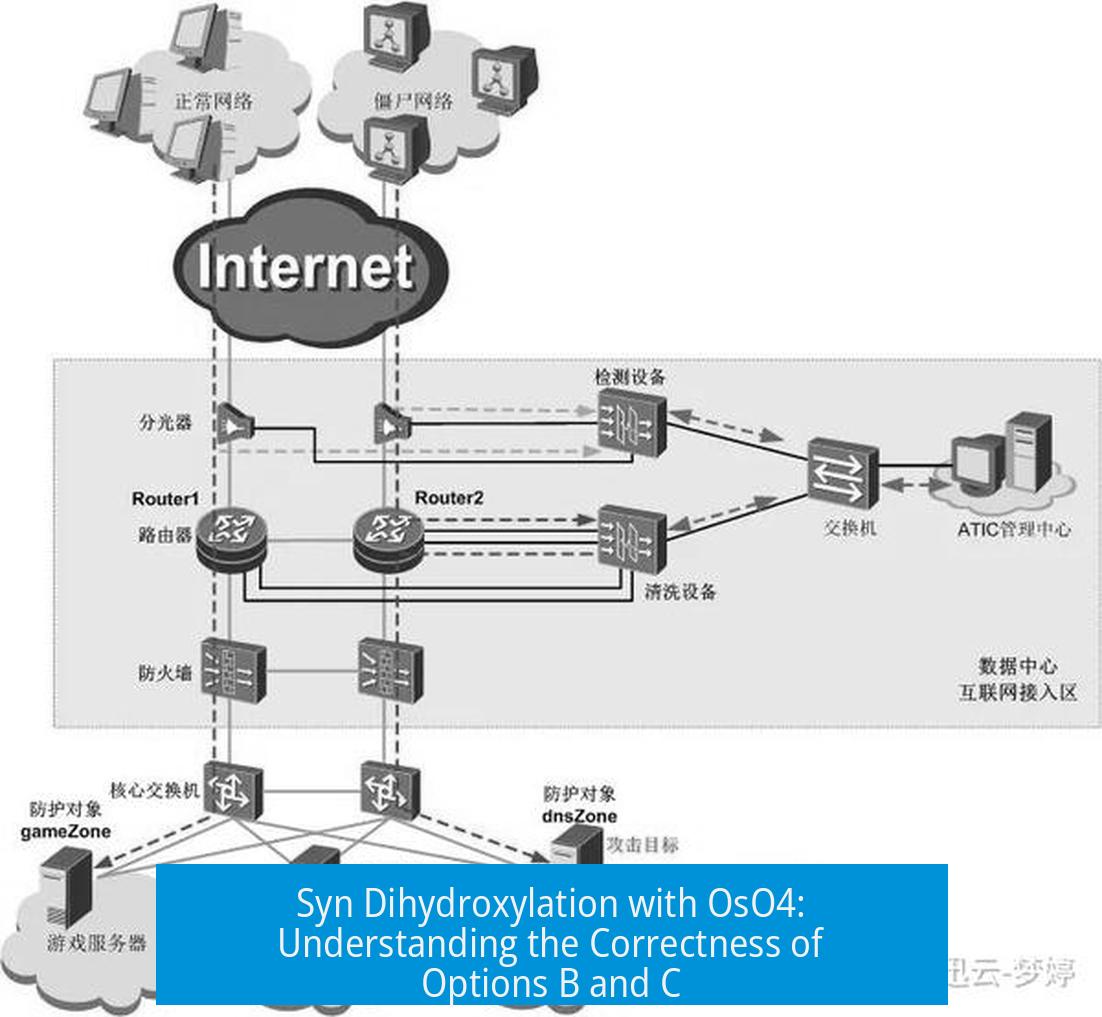Syn Dihydroxylation with OsO4: Are Both B and C Correct?
Syn dihydroxylation with osmium tetroxide (OsO4) always proceeds by syn addition, where both hydroxyl groups add to the same face of the alkene. However, in some cases, products can exhibit apparent anti relative stereochemistry after conformational adjustments. This explains why options B and C, which may represent the same enantiomer, can both be correct depending on the stereochemical representation.
Syn vs Relative Configuration in Dihydroxylation
It is crucial to differentiate between the reaction mechanism—syn or anti addition—and the relative stereochemical assignment of the product. OsO4 reacts via syn addition, adding two hydroxyl groups to the same alkene face.
However, when assigning the product’s stereochemistry, chemists often depict molecules in their most stable conformations, such as a zigzag form, by rotating about single carbon-carbon bonds. This visualization can change the apparent relation of groups to each other.
Effect of Alkene Geometry on Product Configuration
- Cis-alkene starting material: Syn addition places both OH groups on the same side. After bond rotations, the groups may appear anti in Fischer or wedge-dash projections.
- Trans-alkene starting material: Syn addition similarly places hydroxyls on the same face, but relative spatial arrangement differs based on initial stereochemistry.
Thus, the stereochemistry of the product’s hydroxyl groups can appear to be anti after conformational adjustments, even though the reaction mechanism is syn.
Why Are Both B and C Correct?
In some cases, options B and C represent the same enantiomer but are drawn differently based on how the molecule is oriented. This difference arises from bond rotations and the conventions used in 2D depictions.
Because B and C correspond to the same stereochemical outcome, both can be correct answers to questions about the product’s structure or configuration. The distinction depends on the perspective of analysis—mechanistic syn addition or stereochemical depiction.
Summary of Key Points
- OsO4 dihydroxylation is a syn addition mechanism.
- Relative stereochemical assignments depend on molecular conformation and drawing conventions.
- Syn addition products can appear anti due to bond rotations in 2D structures.
- Options B and C may represent the same enantiomer despite different drawings.
1. Why does syn dihydroxylation with OsO4 lead to a product that looks like it has anti stereochemistry?
OsO4 adds hydroxyl groups to the same face of the alkene (syn addition). But after rotating the molecule into a zigzag form, one OH appears dashed and the other wedged, giving an anti relative configuration.
2. How can both options b and c be correct in showing OsO4 dihydroxylation products?
Options b and c represent the same enantiomer drawn differently. Both show the correct outcome of syn addition, so both can be considered correct answers.
3. What is the main difference between syn/anti reaction description and relative stereochemistry assignment?
Syn/anti reaction description refers to how groups add during the mechanism. Relative stereochemistry comes from how we draw and rotate the product later, which can make syn products appear anti.
4. Does starting from a cis-alkene change the syn addition nature of OsO4 dihydroxylation?
No. Whether you start with cis or trans alkene, OsO4 adds hydroxyl groups syn, on the same face of the double bond.
5. Why is the way you draw the product important in stereochemistry interpretation?
The drawing style, such as using a zigzag conformation, affects how substituents appear spatially. This can change whether groups look syn or anti in relative configuration, despite the reaction mechanism.





Leave a Comment